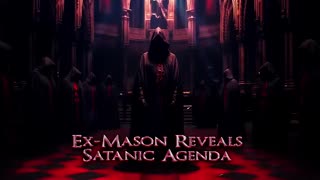Premium Only Content

RESTORED REPUBLIC VIA A GCR UPDATE AS OF NOVEMBER 2, 2023
▶️ Video from Restored Republic
▶️ Jewish denominations: A brief guide for the perplexed: Full Info in This link; https://theconversation.com/jewish-denominations-a-brief-guide-for-the-perplexed-207297
▶️ As a scholar of modern Jewish history, religion and politics, I am often asked to explain the differences between Judaism’s major denominations. Here is a very brief overview: Rabbinic roots; Two thousand years ago, Jews were divided between competing sects all based on the Jewish scriptures, but with different interpretations. After the Romans destroyed the Jerusalem Temple in 70 C.E., one main group, who called themselves “rabbis” – sages or teachers – began to dominate. What we now know as “Judaism” grew out of this group, technically called “Rabbinic Judaism.”
Rabbinic Judaism believed that God gave Jewish teachings and scriptures to Moses at Mt. Sinai, but that they came in two parts: the “written law” or “written Torah” and the “oral law” or “oral Torah.” The oral Torah is a vast body of interpretations that expands upon the written Torah and is the source for most of the rules and theology of Rabbinic Judaism.
Fearful that these traditions might be lost, the early rabbis began the process of writing them down, culminating in two texts called the Mishna and the Talmud. This corpus became the foundation of rabbinic literature.
Read news coverage based on evidence, not tweets
The rabbis assured the Jews that although the temple’s destruction was devastating, Jews could continue to serve God through study, prayer and observing God’s commandments, called “mitzvot.” Someday, they promised, God would send the Messiah, a descendant of King David who would rebuild the temple and return the exiled Jews to the land of Israel.
Historic turning point
There were tensions in Rabbinic Judaism from the outset. For example, starting in the Middle Ages, a Jewish group called the Karaites challenged the rabbis’ authority by rejecting the oral Torah.
Even within the rabbinic tradition, there were regular disagreements: between mystics and rationalists, for example, debates over people claiming to be the messiah; and differences in customs between regions, from medieval Spain to Poland to Yemen.
Still, Rabbinic Judaism remained a more or less united religious community for some 1,500 years – until the 19th century.
Around that time, Jews began to experience emancipation in many parts of Europe, acquiring equal citizenship where they had previously constituted a separate, legal community. Meanwhile, thousands – eventually millions – of Jews moved to the United States>
Full Info in This link; https://theconversation.com/jewish-denominations-a-brief-guide-for-the-perplexed-207297
-
 1:42:48
1:42:48
Knowledge They Don't Want You To Know
9 months agoEx-Mason Reveals The Satanic Agenda (Original Classic)
3.19K -
 2:07:27
2:07:27
Steven Crowder
5 hours agoWho Belongs: What the Future of the American Right Wing Looks Like
354K223 -
 1:29:28
1:29:28
NAG Podcast
20 hours agoSay Something Beyond W/MikeMac: DARKSIDE - Ep.11
5.01K1 -
 35:24
35:24
The Rubin Report
3 hours ago'Real Time' Crowd Goes Quiet as Bill Maher & Democrat Have a Tense Exchange About Zohran Mamdani
97K42 -
 1:21:33
1:21:33
Rebel News
2 hours agoTrump says he can play dirty, Canada-US trade talks off, BC to launch anti-tariff ad | Rebel Roundup
14.9K6 -
 2:26:58
2:26:58
Nikko Ortiz
4 hours agoValid Crashout's... |Rumble Live
13.8K3 -
 LIVE
LIVE
LFA TV
18 hours agoLIVE & BREAKING NEWS! | MONDAY 10/27/25
2,179 watching -
 LIVE
LIVE
StoneMountain64
2 hours agoBattlefield 6 Season 1 TOMORROW. Battle Royale? New Map + New Weapons!
108 watching -
 1:22:23
1:22:23
The Mel K Show
3 hours agoMORNINGS WITH MEL K -Signal to Noise: The International Framework is Balancing Out - 10-27-25
28.9K14 -
 LIVE
LIVE
Viss
3 hours ago🔴LIVE - Battle Royale Release Tomorrow! - Battlefield 6
118 watching